I sat down to speak with Pia Rosado about her and co-author Eva Reye’s new book Behind Closed Doors. This book is a love story to Merida Centro’s transformation over the last 20-25 years. It strikes a particular chord with me—and likely with anyone who’s chosen to make Mérida’s historic Centro their home. While it may not be the easiest place to live, it’s certainly the most magical in the city.
One of my favorite pastimes is wandering through the historic district’s streets, letting my mind imagine what might lie behind each façade and the countless tales of love, loss, and hope that fill every corner. With this book, those of us who have wondered what’s on the other side of the door, can now take a peak inside. And what we see in this book is quite breathtaking.
Pia is a landscape architect by profession. She founded the firm “A Pleno Sol” in Mexico City, where she has been designing residential gardens, parks, and public and commercial spaces for over 30 years. Additionally, she has worked as an interior designer for residential projects in Mexico City and its surrounding areas. In 2018, she successfully published the book VERDE MEXICANO, Private Gardens of Contemporary Mexico.
For Pia, Mérida has been a fundamental part of her life due to her Yucatecan roots going back several generations. In 2015, this connection led her to return to live in the city center, actively participating in its transformation process. Merida Behind Closed Doors/Merida a Puertas Abiertas emerged from a desire to share and honor the past, leaving a visual testament to the architectural grandeur of the historic center and its evolution to the present day.


If you are here in Merida, Yuctan you can come to the book launch at Casa Tho on December 11th from 11am-6pm
Our chat with Pia:
Could you share about your personal connection to Yucatán and what makes the historic homes in Mérida’s “Centro” hold such a special place in your heart?
I was born and raised in Mexico City, but both my parents come from Yucatecan families. I’m also very proud to say that I am the great-granddaughter of the illustrious Yucatecan figure Felipe Carrillo Puerto, so my roots in Yucatán run deep. As a child, I would come to Mérida every year for “La Temporada” or the summer season, spending a lot of time at my grandparents’ house on Avenida Colón, which is now the Club de Leones. That house was my first connection with the grand, traditional homes of downtown Mérida and sparked my fascination with the life that can be lived in these beautiful, grand old buildings.
As for the co-author in the book, Eva Lucía Reyes, she has also been part of Yucatàn for over 30 years she has been involved in the design of great books from Fundacion Banamex which include a great number of books on the Mayan region, haciendas as well as Grand Masters for Mexican Folk Art.
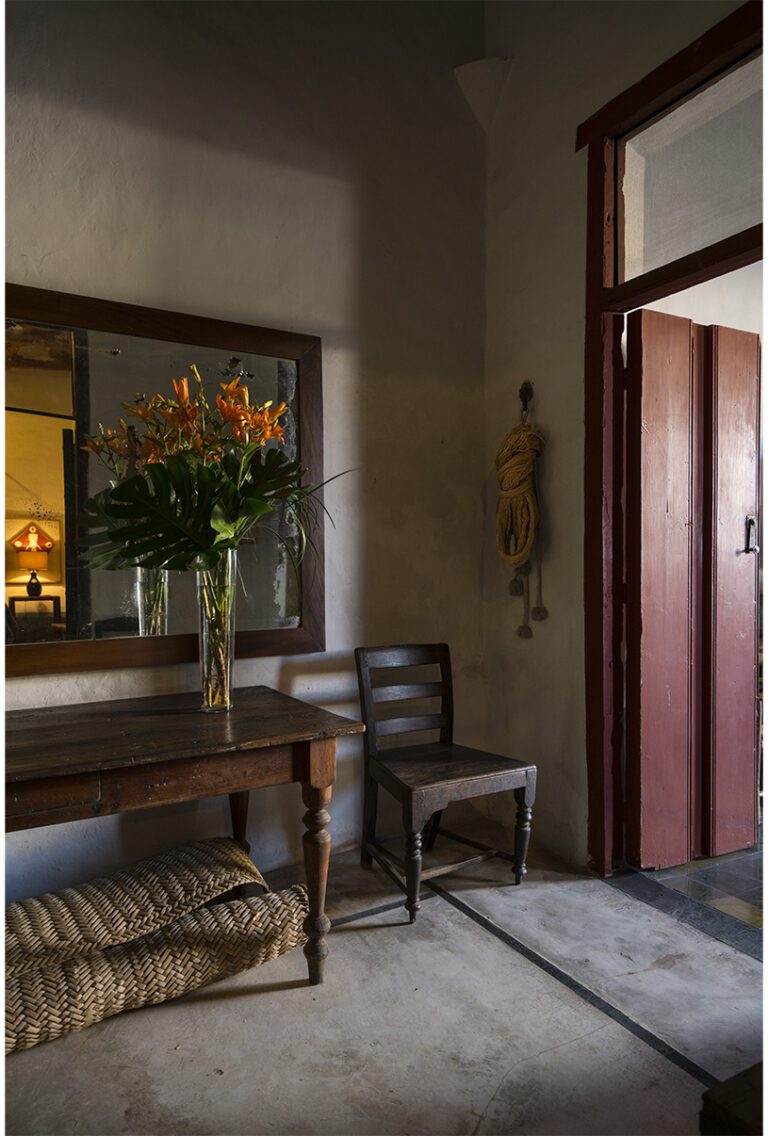

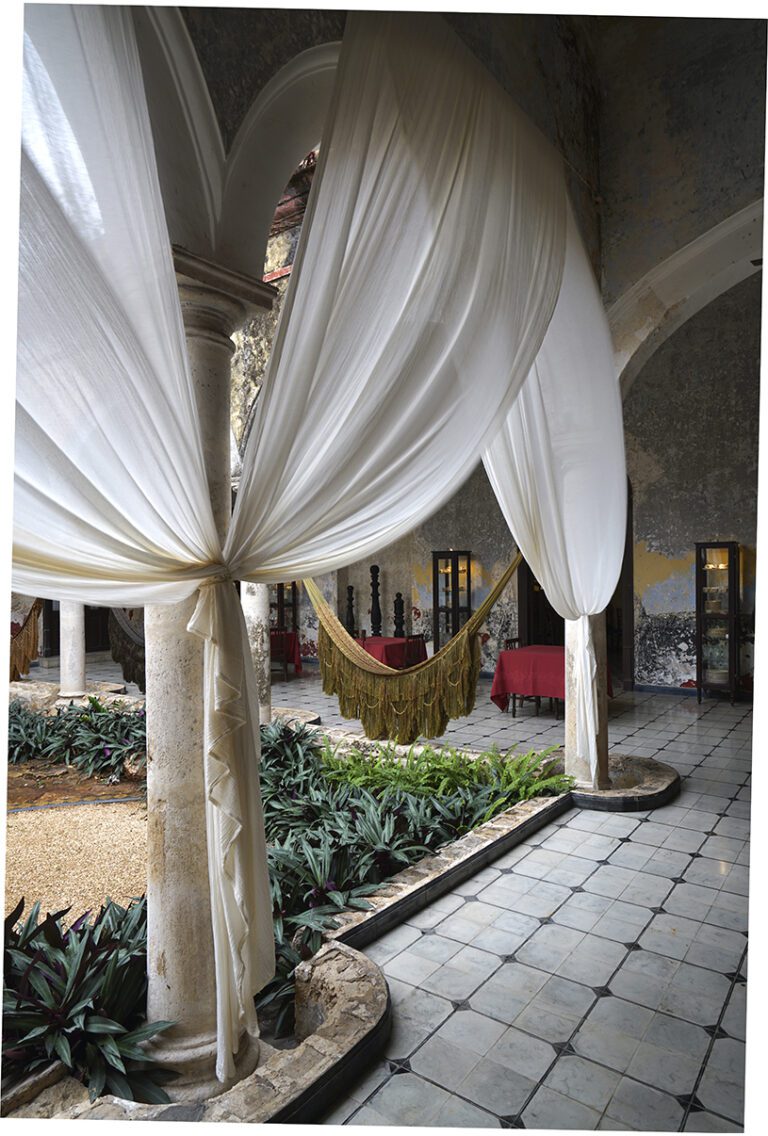

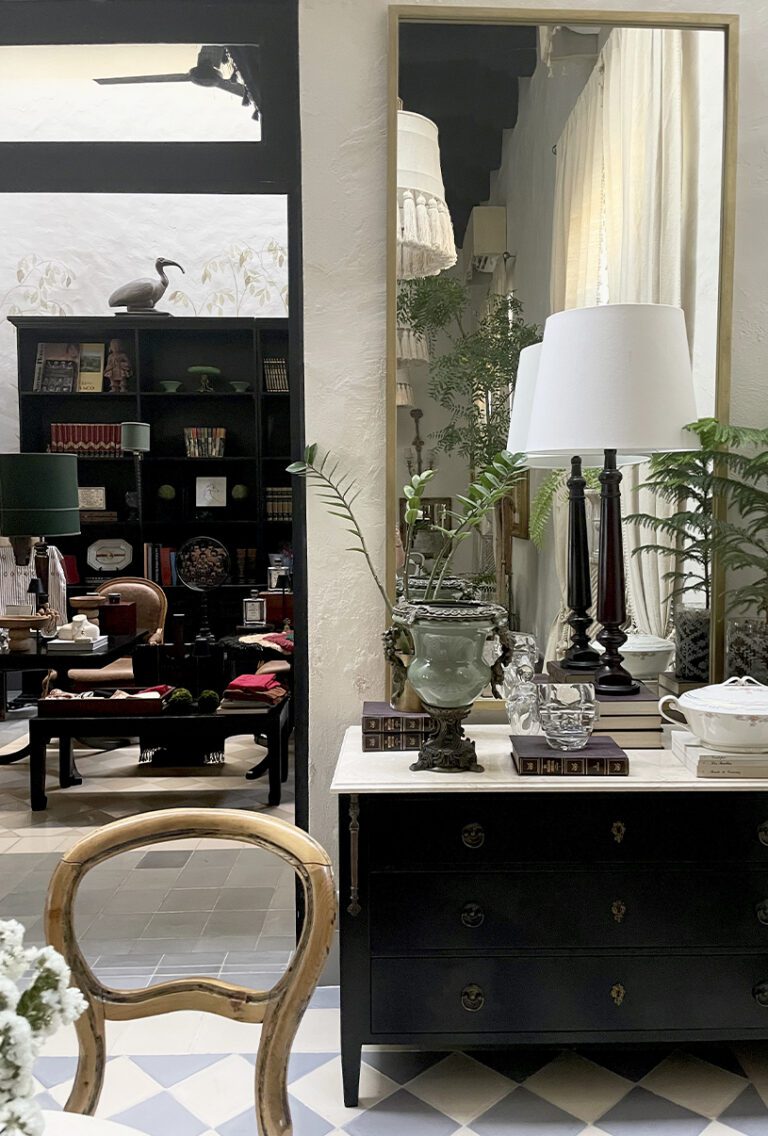

When did the restoration trend in Mérida begin, and when would you say the movement truly gained momentum? Why do you think Mérida has become such a magnet for these projects?
Between the 1960s and the 1980s, downtown historical mansions suffered a period of abandonment and severe deterioration. The beginning of their transformation began in the 1990s with pioneers like Josh Ramos and John Powell who were among the leaders of this transformation. They came from the creative world of design and were fascinated by colonial architecture and antiques. They did important rescuing of buildings in areas like La Ermita and had a vision that inspired others by showcasing the incredible possible transformations in these grand mansions. The trend began to take shape as these homes—many of which had been abandoned and were in poor condition—were affordable and possessed not only historical value, but also amazing architectural potential.
Who are the people leading these transformations? Are they primarily foreigners, Mexicans from other regions, or local Yucatecans?
Many of the transformations of these historic homes were initiated by foreigners. Since the mid-90s, Americans, Canadians, and Europeans have continued to lead much of this transformation. More recently, talented architects from Mexico City and local Yucatecan architects have also become actively involved, adding their unique perspectives to the revitalization of downtown Mérida.
How do you see these beautifully restored homes contributing to the preservation and celebration of Mérida’s heritage?
This movement of reviving, rescuing, and restoring these homes has been crucial in making the Centro area an attractive place again. By the 1980’s more than 500 houses were uninhabited and in ruins, and the rest that were standing, had become largely commercial spaces.
Now, with the newly rebuilt homes, the historic center has come back to life, with new residents and activities that bring a lived-in vibrancy—cafés, restaurants, art galleries, and gathering spaces which have all contributed to a complete revival of the area. It has also become an important area for tourism and the local community in the southern part of the city, making it a priority for local authorities to participate. A great example of this renewed interest is the city’s investment in projects like La Plancha Park, the Paseo Gastronómico on the Calle 47 x 60 y 48, along with programs to restore and beautify the facades of downtown streets, inviting not only tourists but also local Yucatecans to reconnect with the heart of their city.
With your design background, how did it shape your perspective in selecting and presenting each transformation? Were there specific characteristics you sought in a home for it to be featured in the book?
Our main criteria for selecting the houses were, first, that they had to be located within Mérida’s historic center, and that the transformation had to involve an existing historic home which in turn preserved part of the historic essence of the house. We did not consider houses that were entirely new constructions.
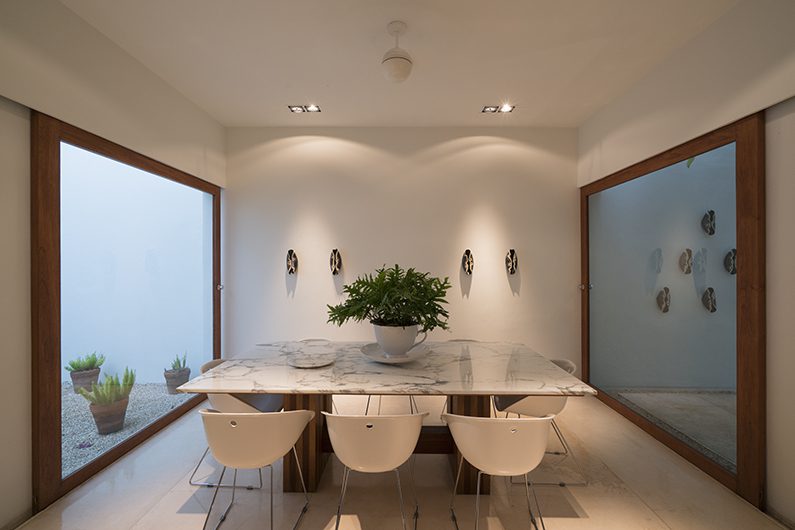



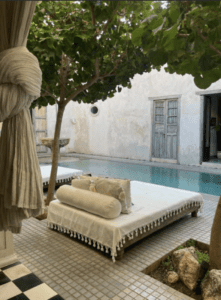



Are there design details in these homes that especially stand out to you, blending contemporary style with Mérida’s historic charm?
One standout aspect is that each house had to retain an original element from the building’s past. The architectural styles we often see in these buildings are the colonial influences from the Spanish period (central patios, tile roofs, etc) as well as the neoclassical styles imported from France, typical of the late 19th and early 20th centuries (decorative elements, cornices, balusters, imported marbles, etc) Many of the transformations feature the rescuing of classic elements like the mampostería walls or the original pasta tile floors, high wooden beam ceilings combined with contemporary elements such as polished cement floors, steel beams with top to bottom glass panels, luscious gardens and decks with pools, displaying a beautiful fusion of old and new.
How has working on this book deepened or changed your connection to Mérida?
We feel particularly honored and grateful to the homeowners who welcomed us into their intimate living spaces and who shared their stories with us.
We visited over 40 homes and featured 18 of them in the book. Each home gave us insight into the personal motivation of people who are breathing new life into these spaces and creating their own stories within Mérida’s historical fabric.
What experience or feeling do you hope readers will have as they explore this collection of restored homes?
Merida behind closed doors attests to the grandeur that has been recovered in the historic downtown center of the city in recent years. It invites the reader to delight in the interiors of some of these private spaces, most of which can only be entered via a direct, personal invitation. We are honored to share an inside glimpse into these homes and help people discover the unexpected paradise behind these doors.
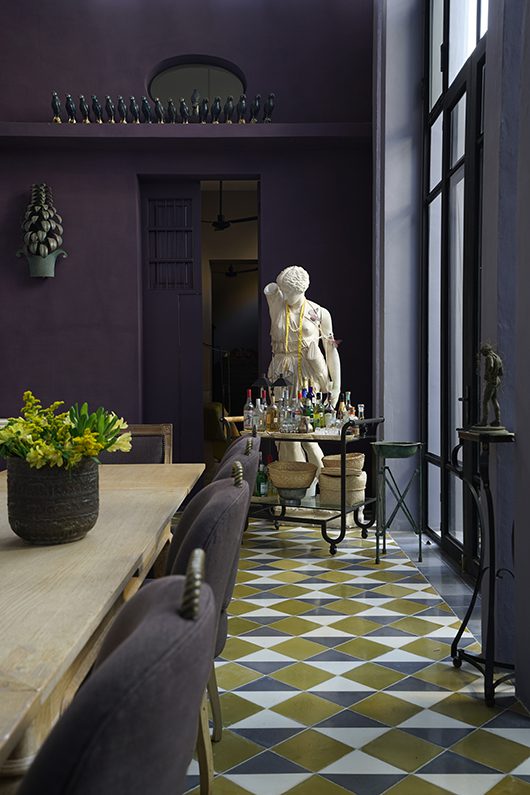





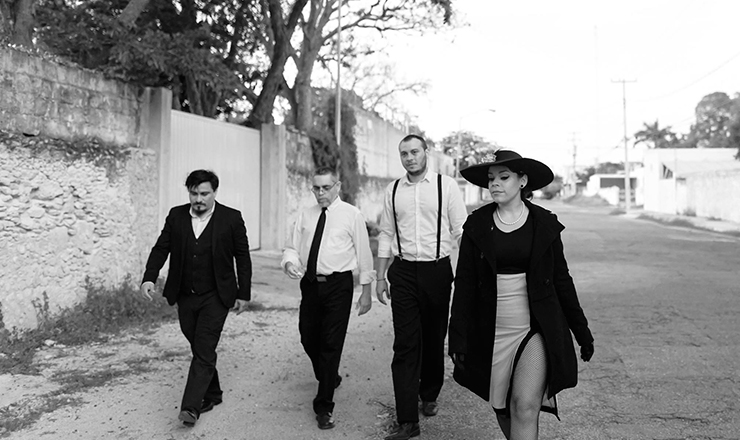
How can I get a copy of this book? (Behind Closed Doors ….). I am in the United States. (Although I will be back in Merida soon).
thank you!!
Lisa
I have the same request. I am an architect and would really love to buy this book. The website seemed to only allow purchasing for delivery to Mexico.
I just returned from visiting Mérida and saw this wonderful book at the beautiful place rented by the wedding party, 500 Calle 51 – it could have been in the pages of your book. Did you design it?